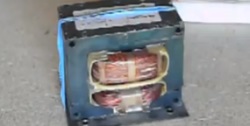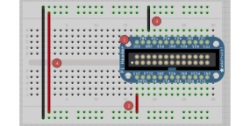The Maker Movement is a loose confederation of people undertaking DIY pursuits that are now engineering oriented, the stuff we report on daily on electronicproducts.com, including electronics, robotics, and 3D printing.

How to salvage transformers from dead microwaves (details in Make magazine.)

Web-based physical computing with Raspberry Pi (details in Make magazine.)
In one sense, the Maker Movement is nothing new. If you are a do-it-yourselfer – the actual words behind the acronym “DIY” – you are familiar with such places as The Home Depot and Radio Shack, generically a hardware store and an electronics-oriented hardware store. Before the Twin Towers existed in lower Manhattan, their site was the home to little Army-surplus stores collectively known as Radio Row. Fifty-plus years ago, homeowners, radio buffs, soap box racers, model-railroad enthusiasts, and the like frequented such places to repair their homes and build things they wouldn’t buy ready-made in stores.
The Home Depot and Lowe’s became national chains of hardware stores to compete with local businesses. Radio Shack got its name from the place where an amateur radio operator would have his or her radio equipment. It grew from a place not too different from an Army surplus store and a hobbyist’s radio shack to a national brand.
The Maker Movement gets its name from an event series known as the Maker Faire, launched in the 2000s by Make magazine, the DIY bible, notes Reena Jana on the designmind website. Unlike what happened before, when DIY interest created companies, established companies are tapping into the newfound interest in DIY.
Examples abound:
• In 2011 software maker Autodesk acquired Instructables, an online community of makers. The site is a gateway to all sorts of projects and contests.
• Since early 2012, General Electric began hosting what it calls GE Garages, temporary workspaces that provide prototyping tools. GE calls these workspaces “hands-on access to the future of manufacturing.”
• The 2012 Maker Faire in the Bay Area featured non-DIY corporate sponsors as diverse as E-surance, PepsiCo, and Ford.
• In 2012, a $25 Linux-based computer called Raspberry Pi, the brainchild of professors at the University of Cambridge’s Computer Laboratory in England went into mass-production with licensed manufacture deals with Element14/Premier Farnell and RS Electronics.
• In June 2013, Intel and Cognizant pledged to support an educational initiative called Maker Corps.
• Even the United States government is eager to channel the Maker Movement’s momentum. In May 2013, the U.S. Department of Defense’s agency for Defense Advanced Research Projects (DARPA) announced that its new Adaptive Vehicle Make program formed an alliance with TechShop, a national chain of maker workshops.
• And Radio Shack has gone back to its roots in a sense by selling the DIY-inspired Arduino computer.
Brit Morin observes on huffingtonpost.com, “In a world of mass-produced products, modern technology has made it easier than ever for a single individual to create and distribute items that are customizable and unique without having middlemen like manufacturers. This growing shift will continue to affect the economy and will likely have big implications on large retailers. It is a special time in history that will have a transformative impact on our future.”
To emphasize that the Maker Movement is a youth program, here’s a short video of elementary school students working with Maker Corps:
In short, the Maker Movement is an energized – or re-energized – movement of ordinary people who are not waiting for manufacturers to build the things that people need. The tools are out there: 3-D printers, software, computers stand at the ready to do the work. At very least, the Maker Movement means competition for traditional business, whether that business is brick and mortar or online.
Advertisement
Learn more about Electronic Products Magazine





